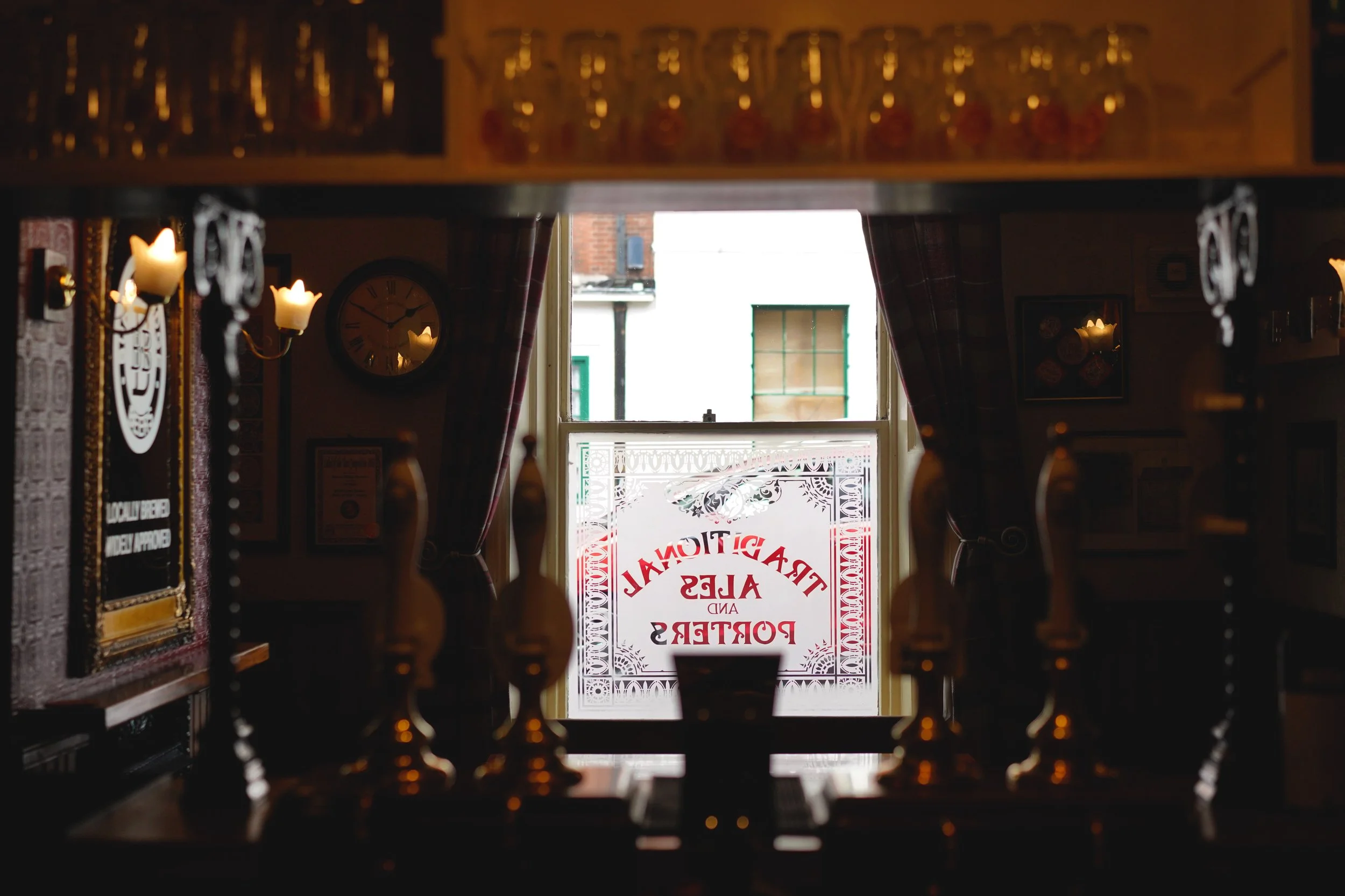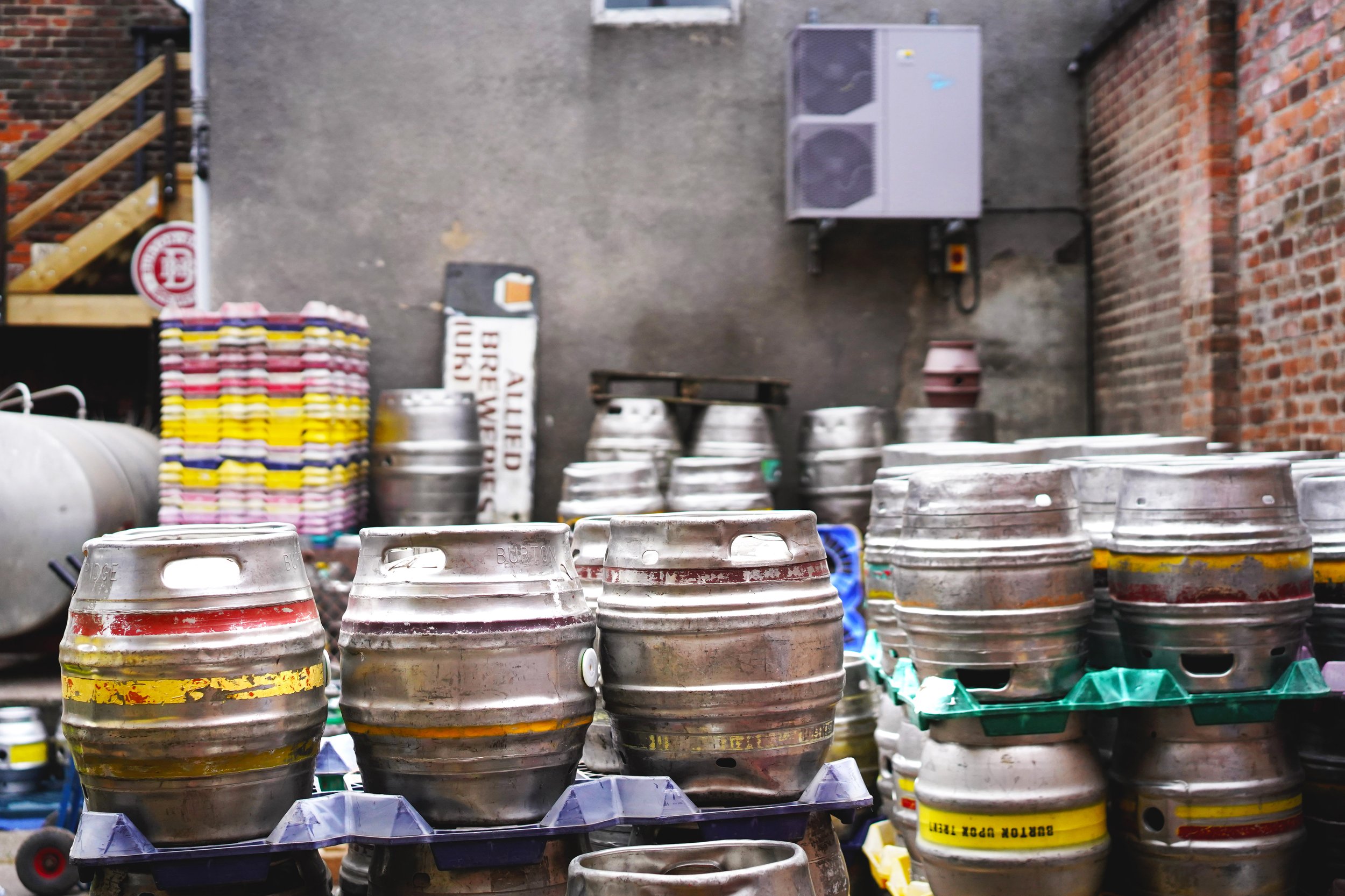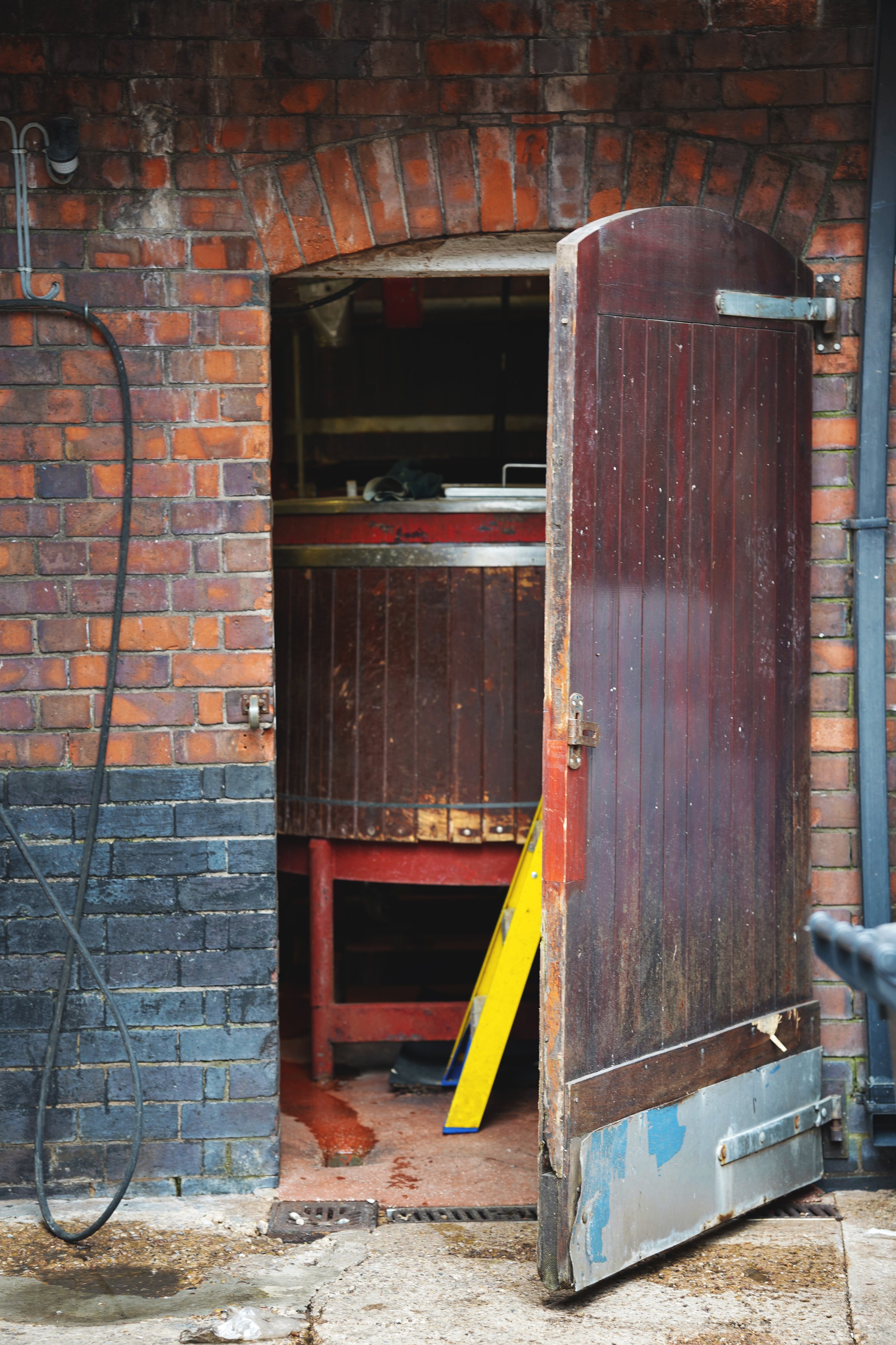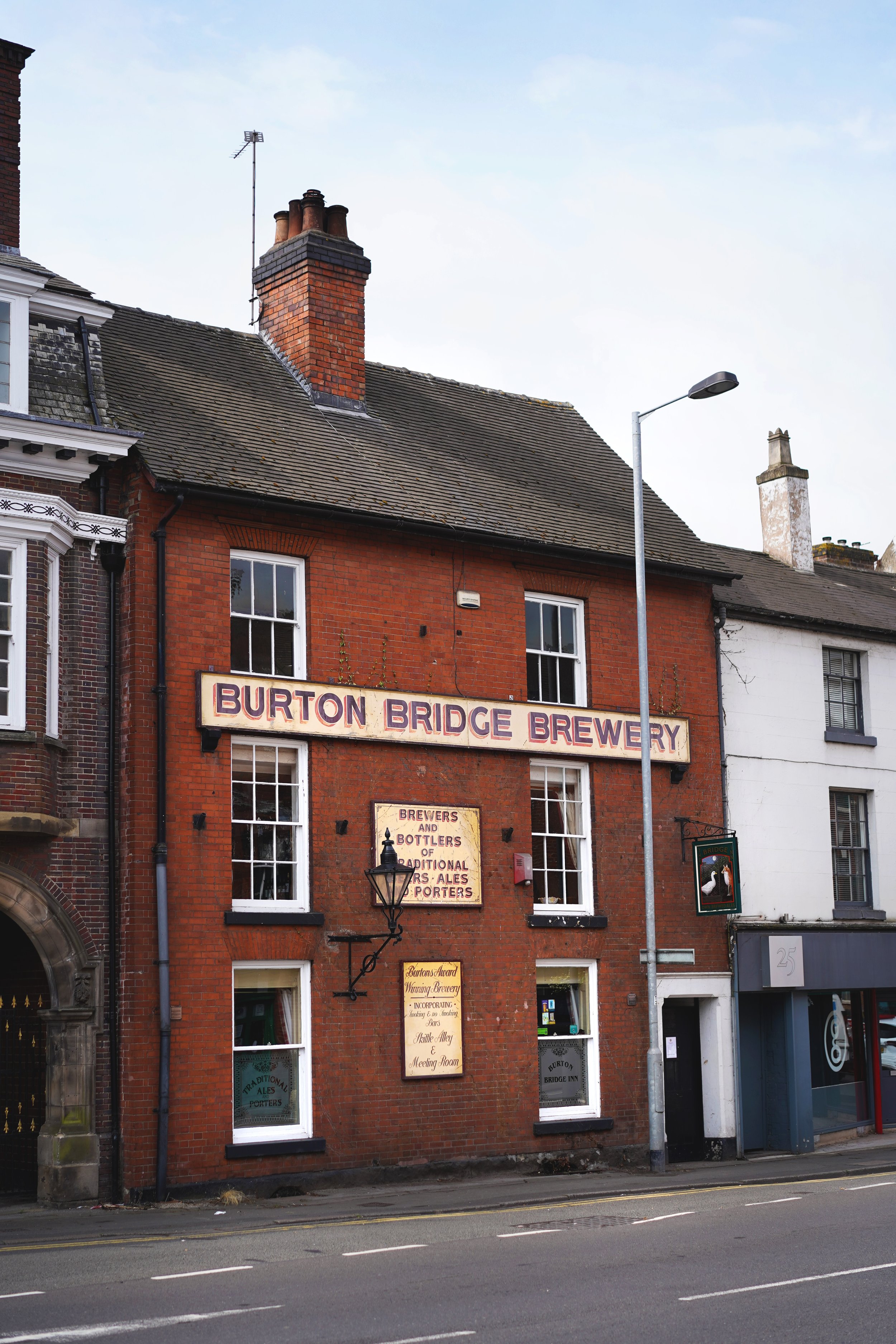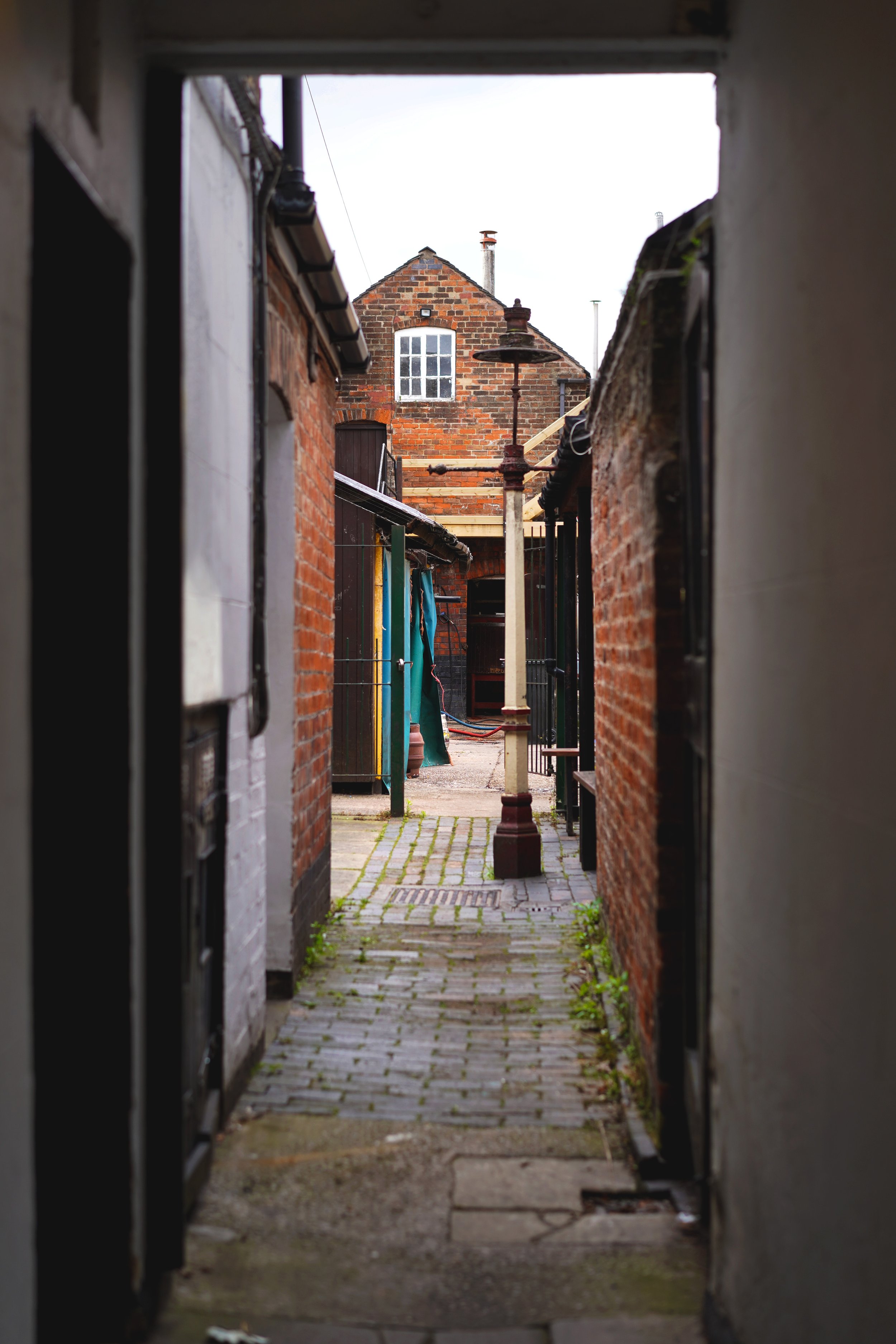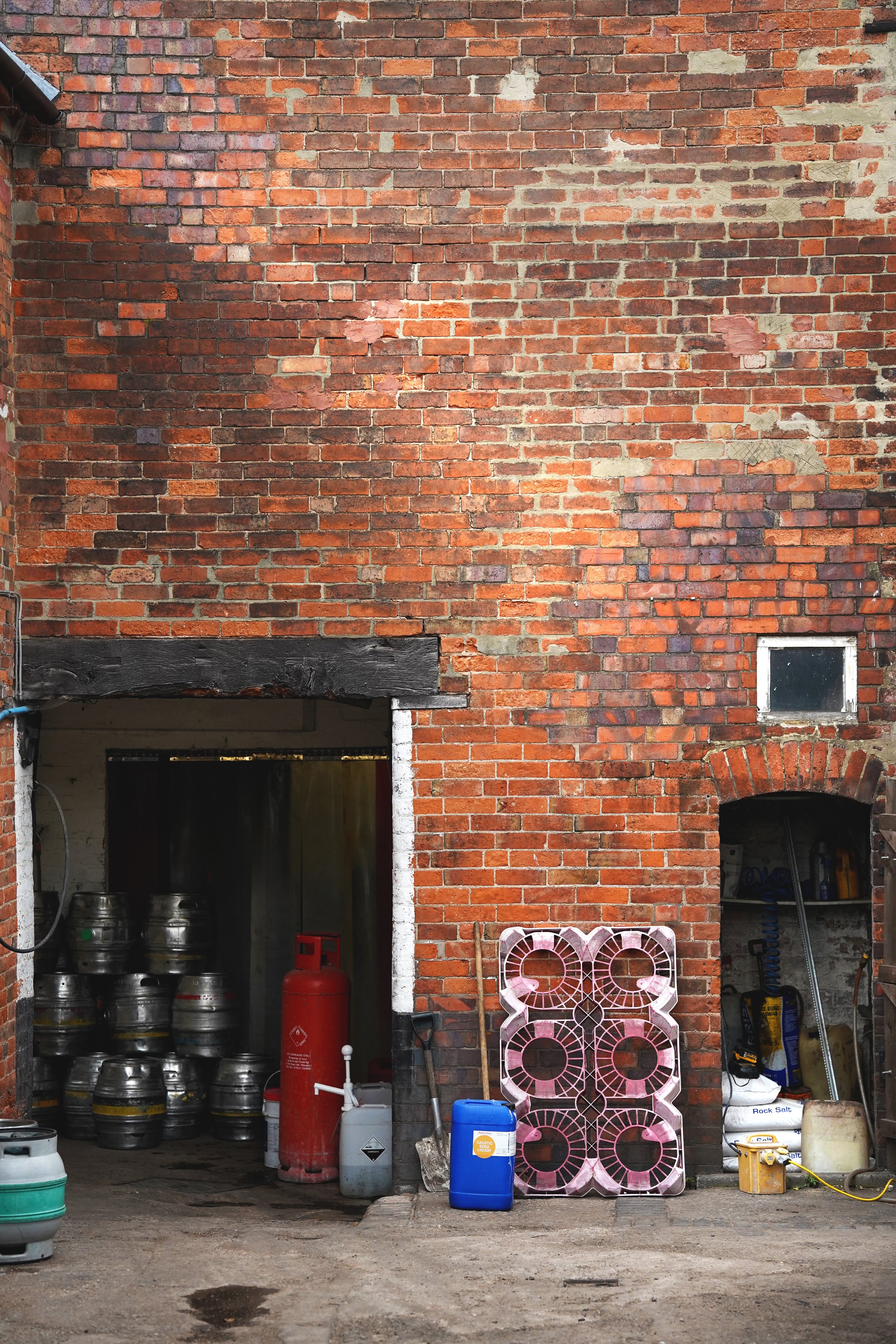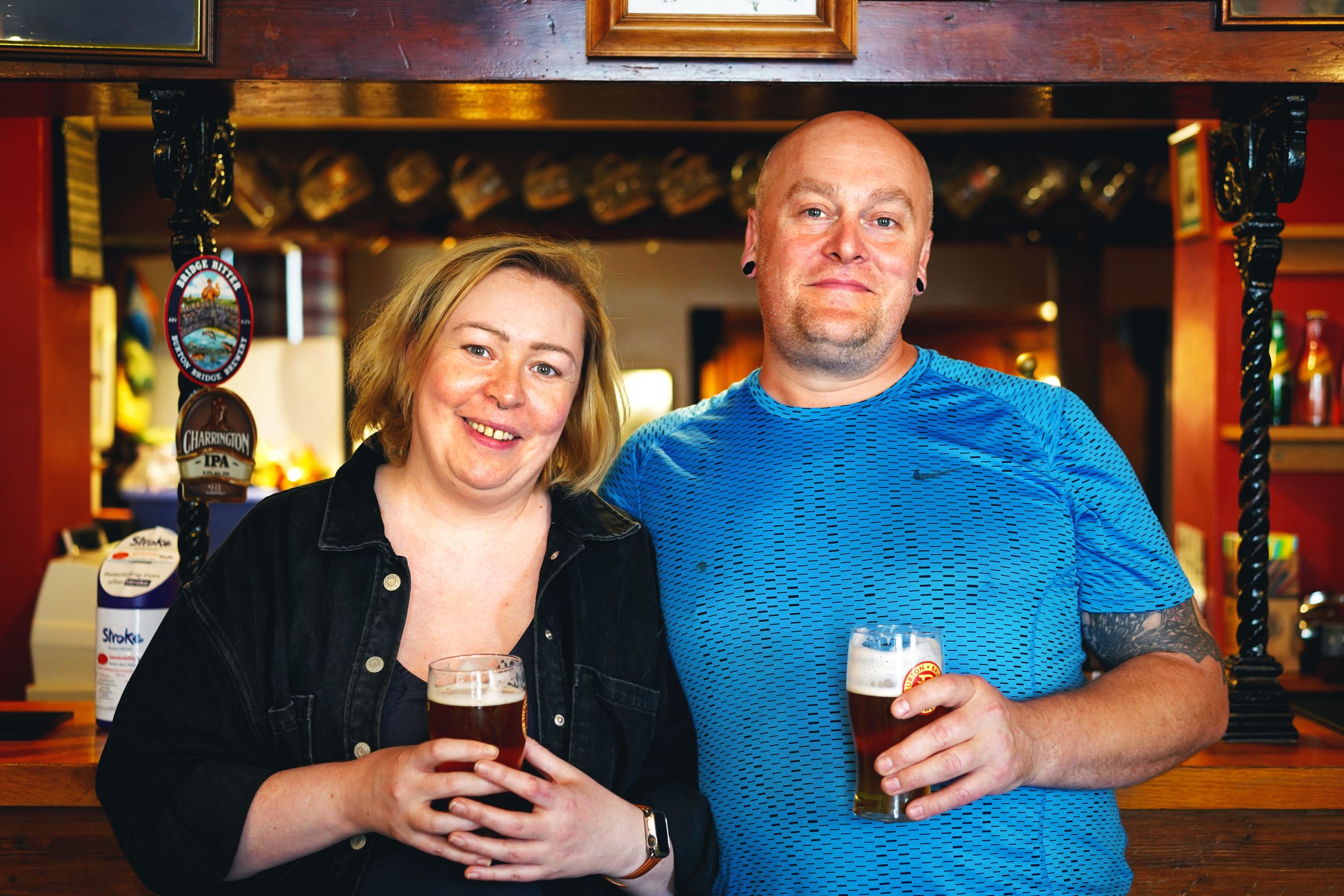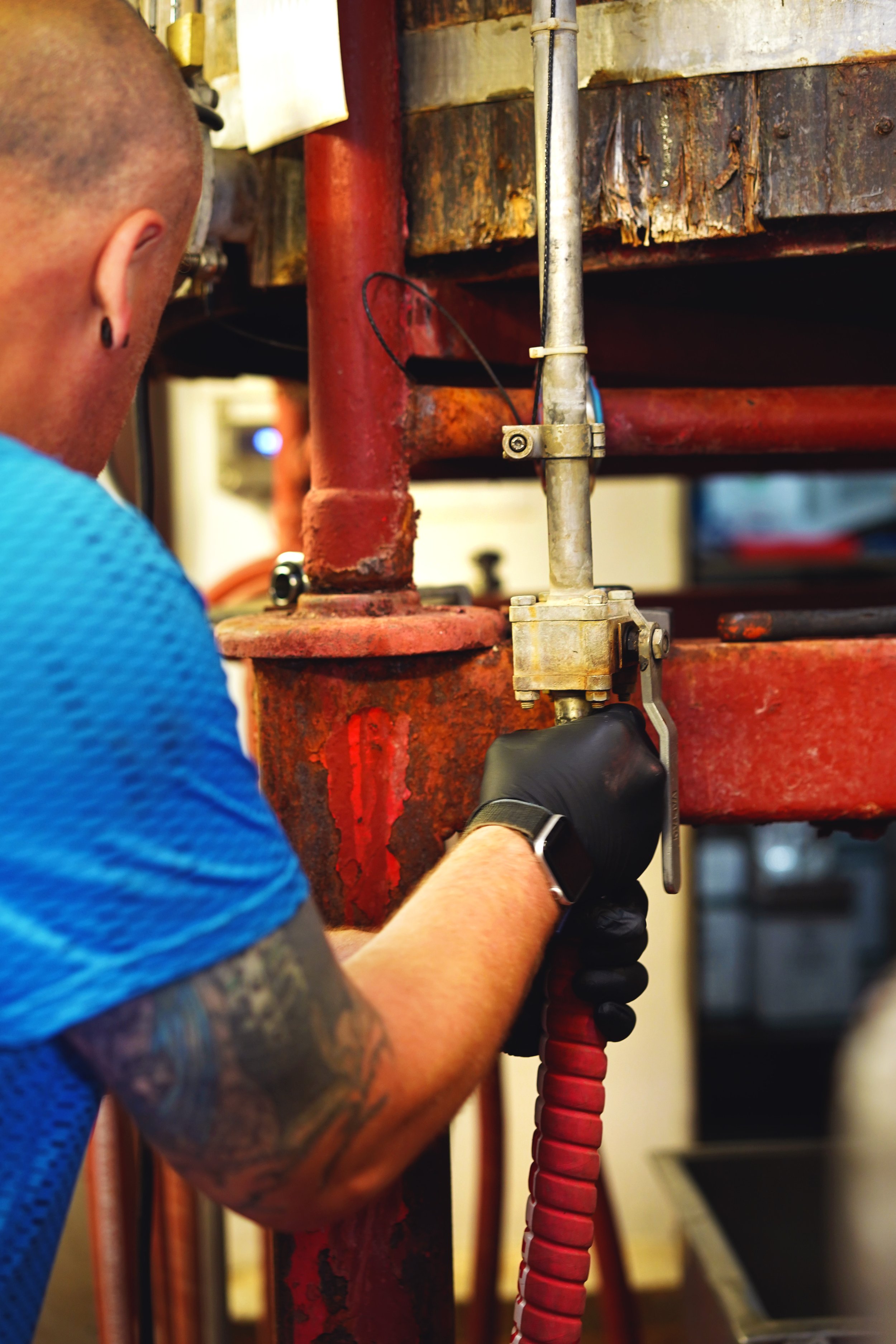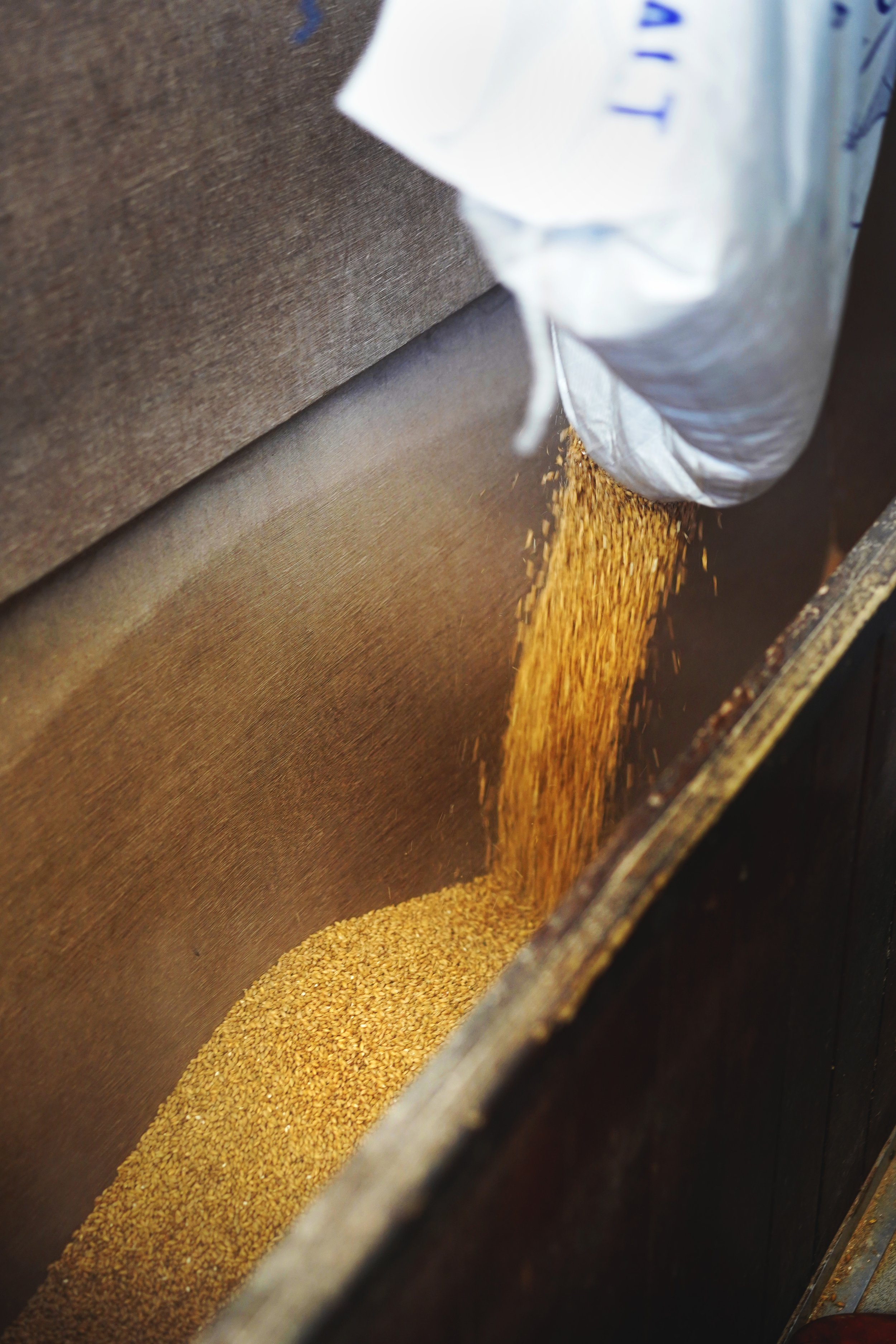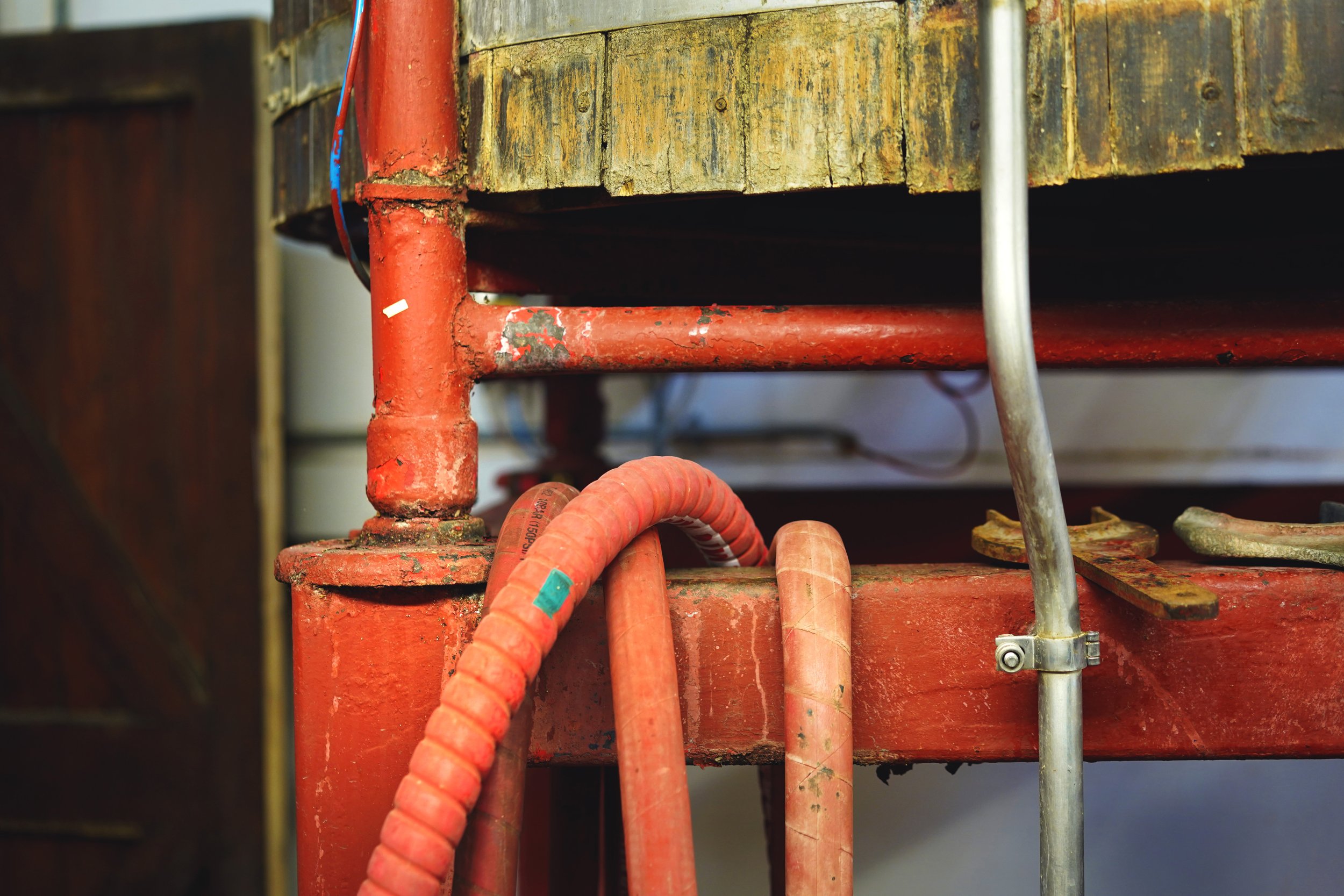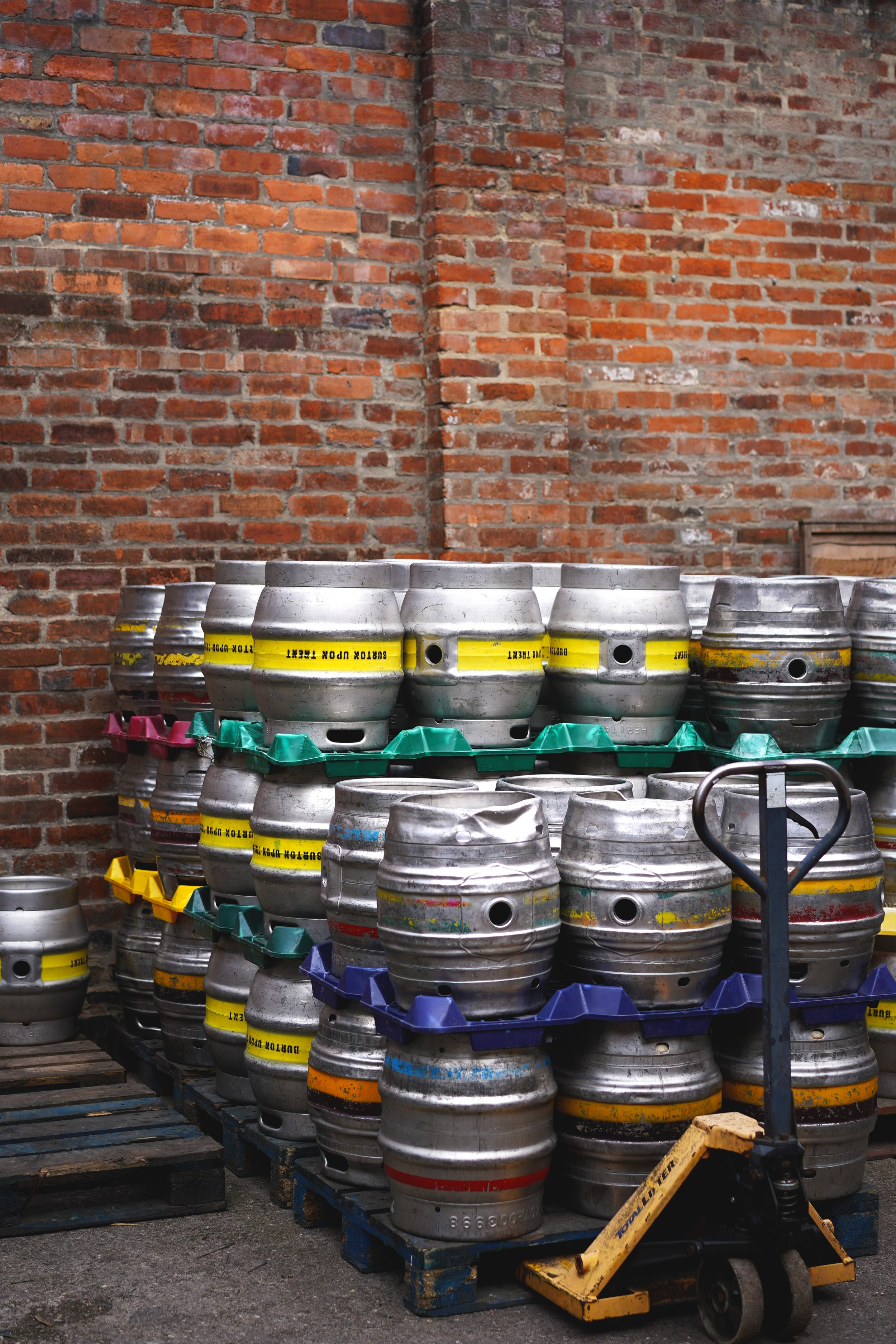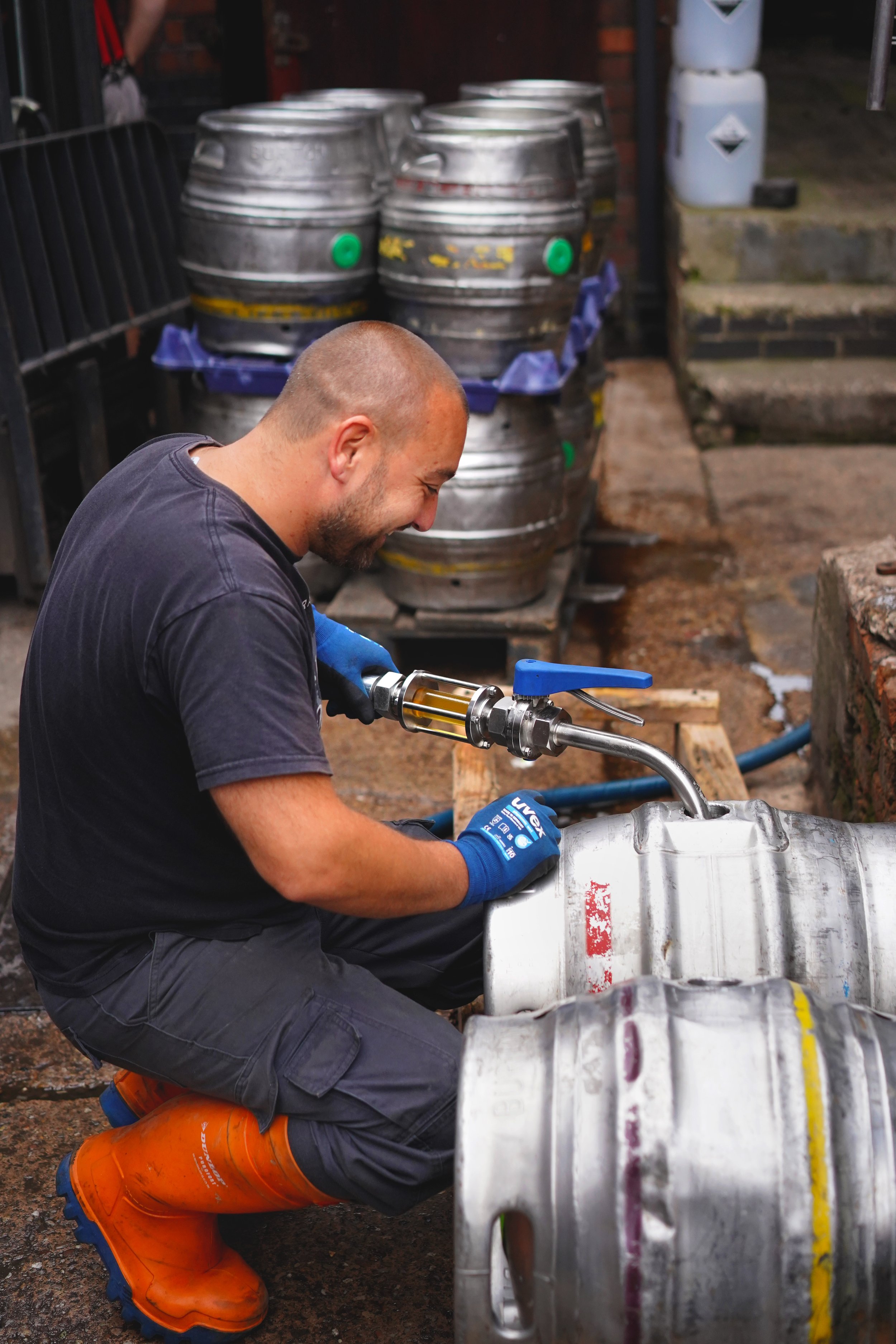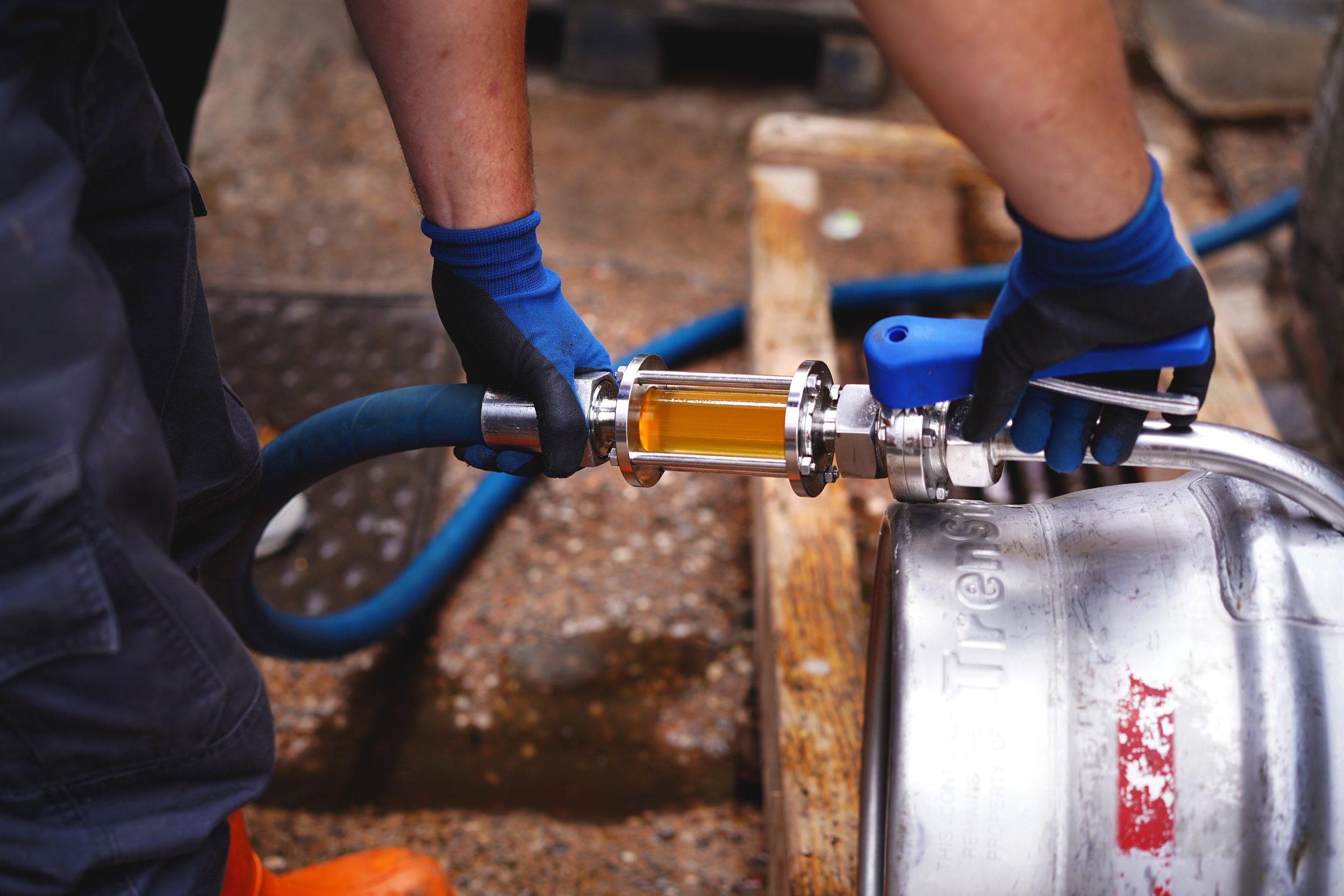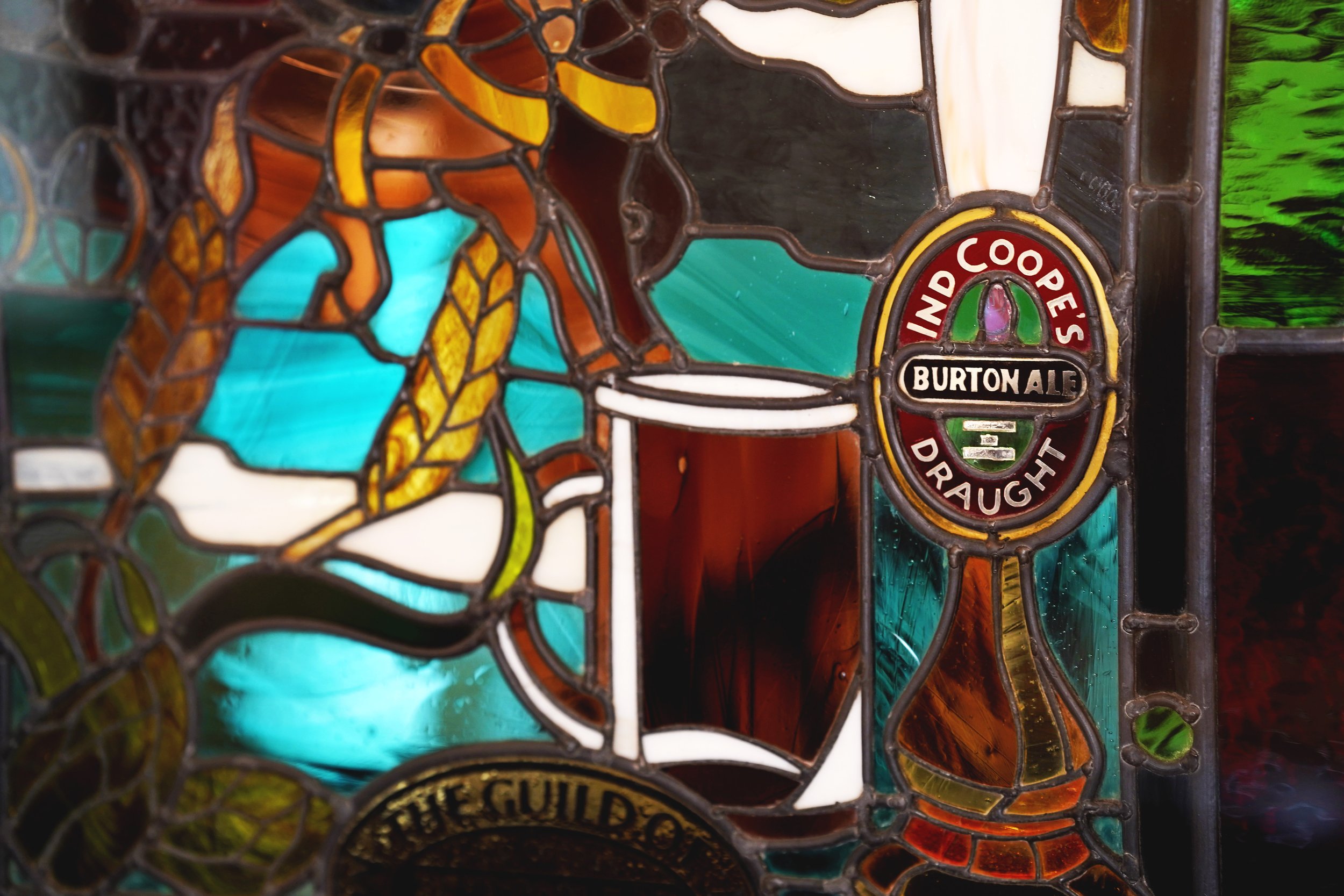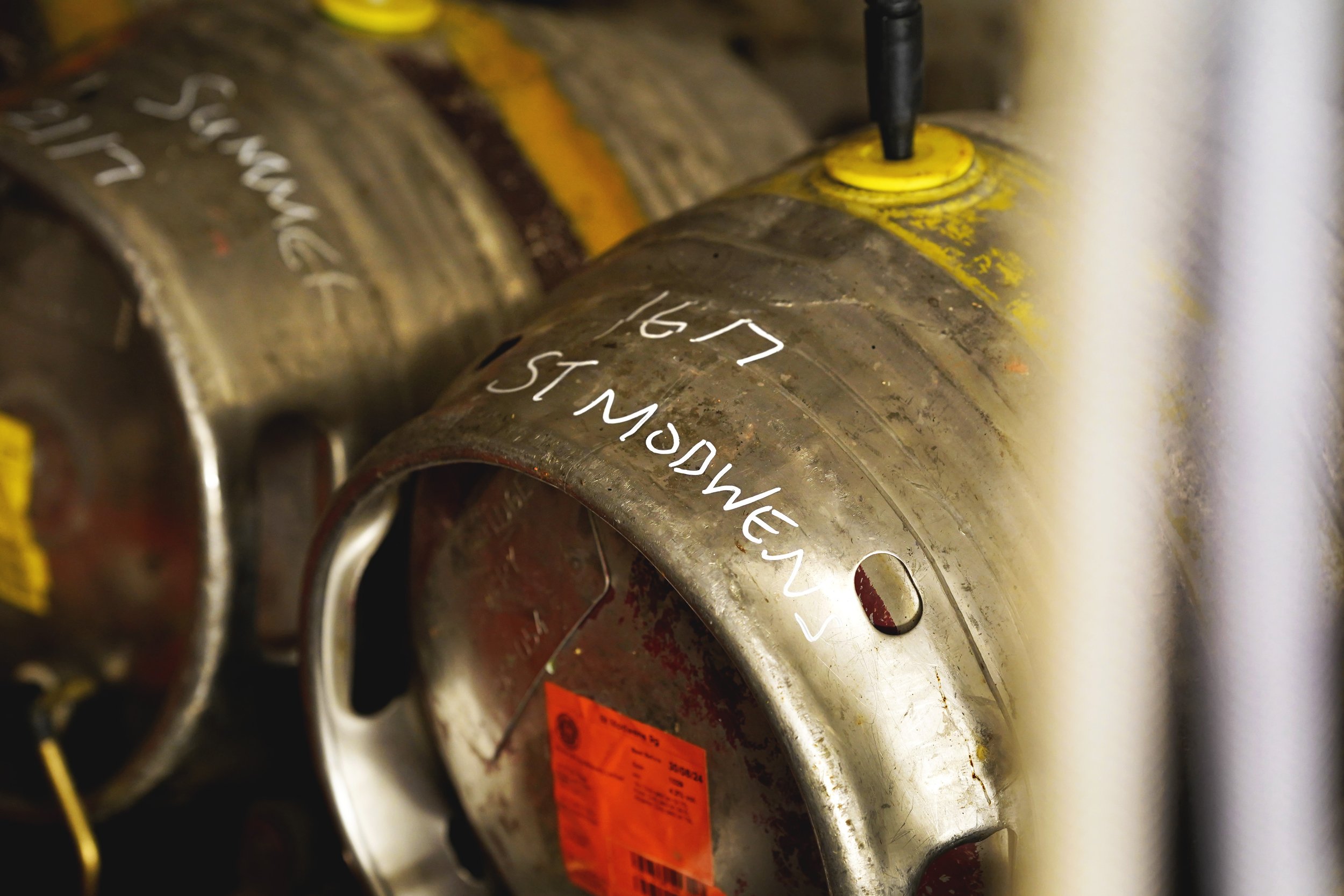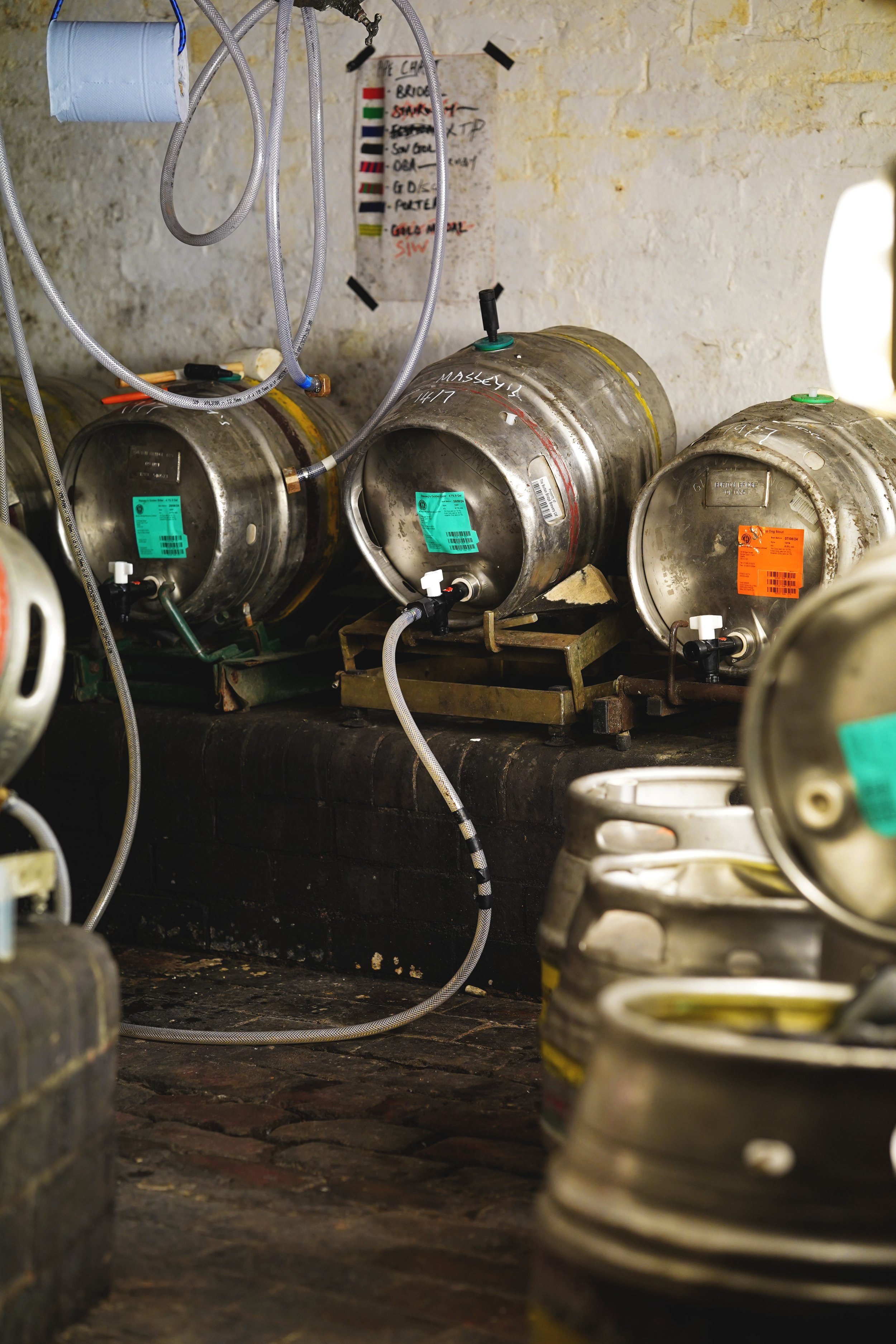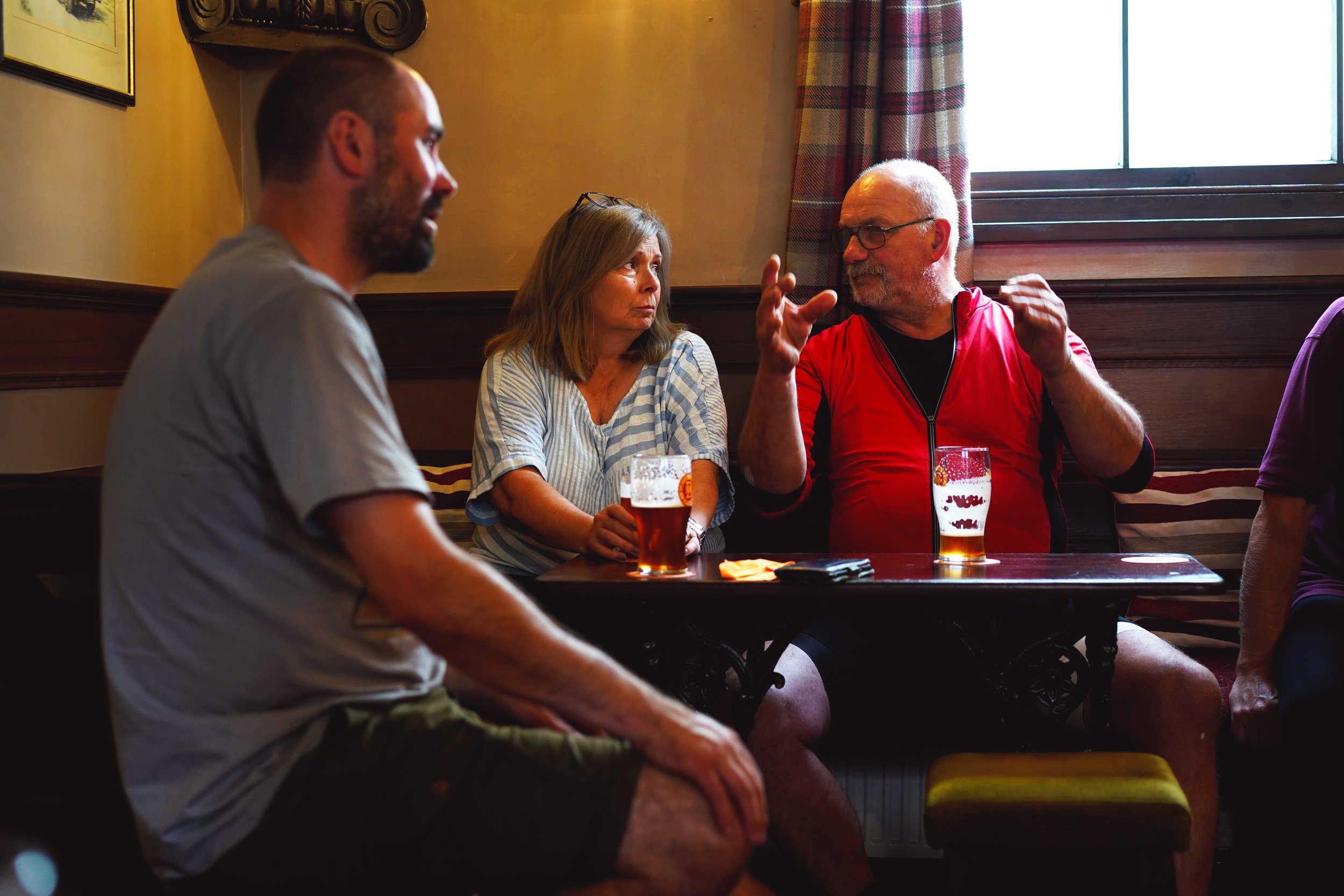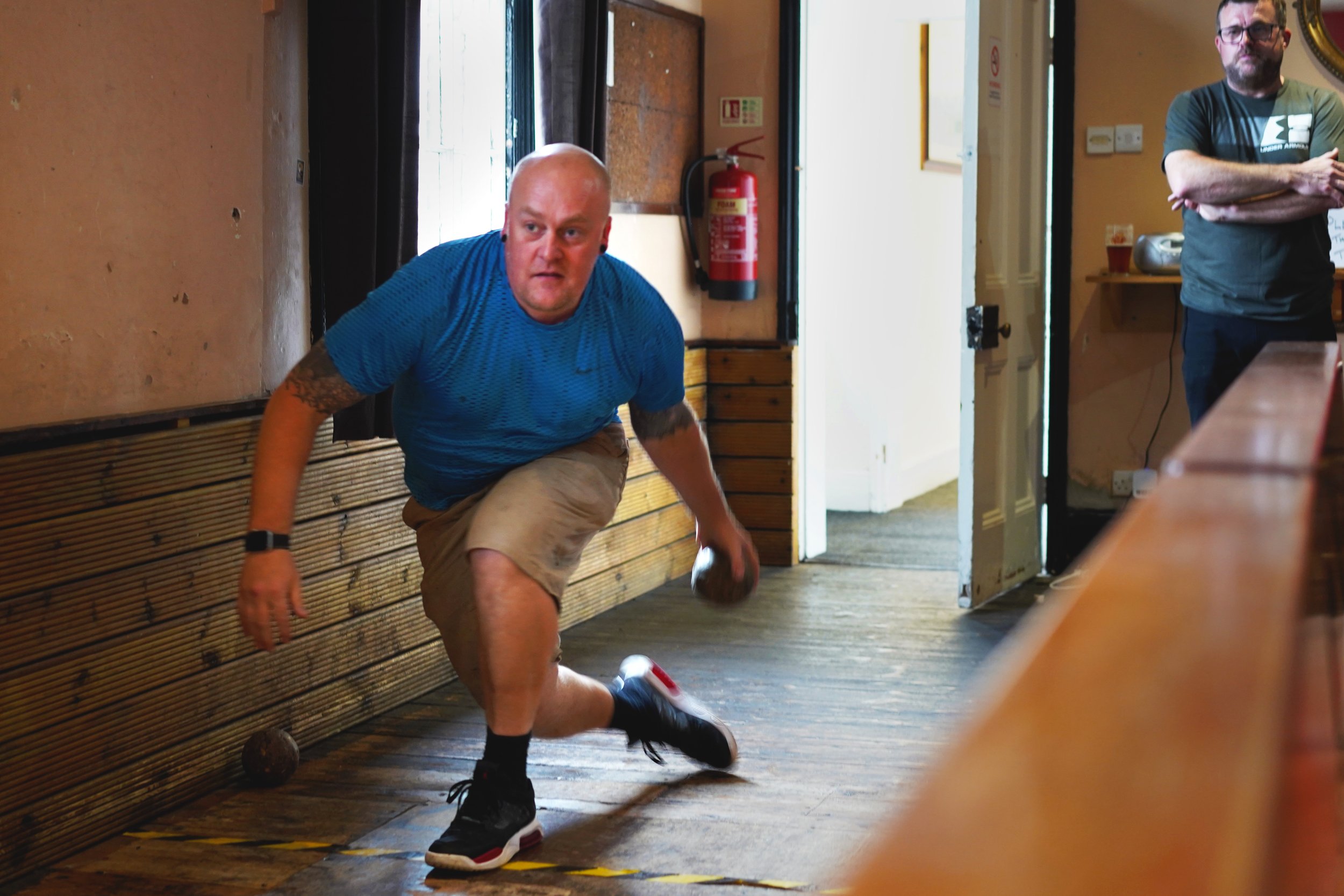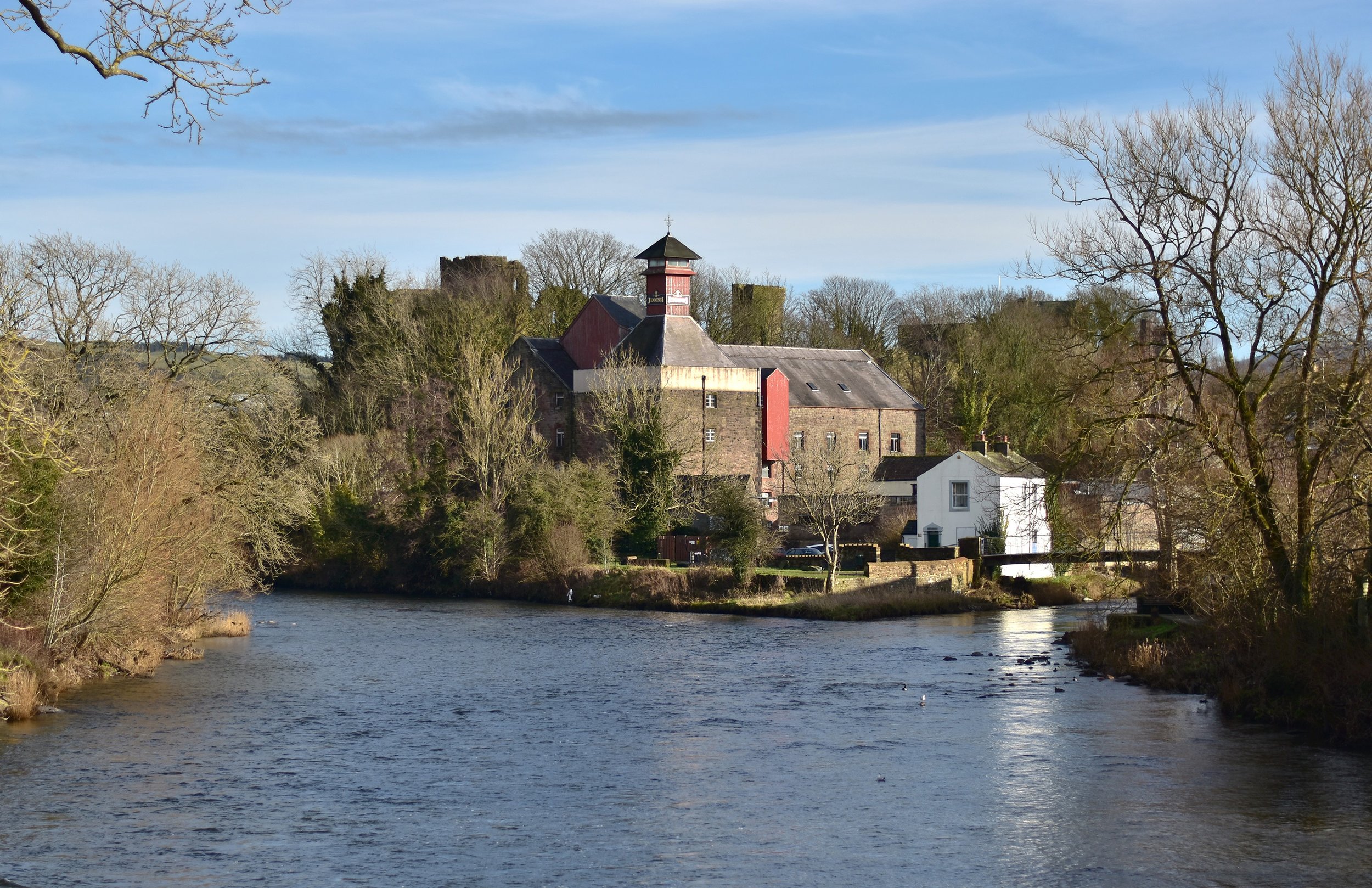A Torch In The Infinite — Burton Bridge Brewery in Burton upon Trent, Staffordshire
“Tradition is the handing down of the flame and not the worshipping of ashes.”
It’s unclear who said this first, but Gustav Mahler, the Austro-Bohemian composer, said it best. He was supposedly paraphrasing Saint Thomas More, the lawyer and philosopher who served and was then executed by Henry VIII, but the original quote proves elusive. Whatever, the sentiment is one that has been expressed for centuries. And it’s one that many of us in the beer world should have pinned above our desks. (This might please Mahler, who was born in what is now the southern Czech Republic, just when Czech pilsner was beginning its conquest of the Austro-Hungarian Empire.)
There’s a lot to unpack from this single, snappy sentence. First, it presupposes that tradition is important. We’ve already decided that its preservation is vital; now we’re talking about the best way to do it.
There aren’t many people who would brazenly argue that tradition isn’t important. But is it as important as, say, making lots of money? When one has to go in favour of the other, it is “with regret” that the preservation of tradition is always the casualty.
Photography by Matthew Curtis
In 2024, I wrote about the demise of Worthington White Shield at the hands of Molson Coors, who closed the National Brewery Centre in Burton upon Trent—Britain’s biggest brewing museum—in October 2022. The big boys are always watching each other, neurotically competitive. Carlsberg Marston’s—also based in Burton—saw what their rival was doing and thought: “You want to destroy Britain’s brewing heritage? Hold my beer.”
They began 2024 by introducing an ersatz version of cask ale dubbed “fresh ale,” arguing that they hoped to revitalise cask ale by selling something that wasn’t cask ale through cask ale pumps instead of cask ale. They followed this up by killing off the last remaining traditional Burton Union brewing system in the world (Firestone Walker in California has a similar modified system.) Then they ceased production of at least eleven beers in their ale portfolio, eight of them cask—including the very decent Old Empire IPA, and the legendary Banks’s Mild. (They admitted to eleven. Eagle-eyed observers have since found more “disappeared” beers.)
The corporate vandalism of Britain’s brewing heritage is a national issue. But it unfailingly centres on Burton-on-Trent. Burton is to traditional British ale what Pilsen or Munich are to lager, Dublin to stout, or Portland to American craft beer. Its spiritual home. This is where IPA was perfected—from here, it conquered the world. Before that, sweet, brown Burton Ale fuelled the courts of the Czars in St Petersburg. By the late 19th century, this small town brewed a quarter of all the beer in Britain and was home to more than thirty breweries. The dry snap of ales brewed with “Burtonised” water—where salts are added to replicate the water chemistry in the aquifers under the layers of shale on which Burton sits—still defines pale ales globally.
These are the beers the first American craft brewers, such as Washington State’s Yakima Brewing & Malting Co (which ran from 1982-1990,) sought to recreate. Burton is revered as much in the international brewing scene as it is at home by the dwindling band of grey-haired British drinkers who are old enough to remember the twilight of the glory days, when the heady caramel aromas of the mash and the brief, citrus and grassy perfume of the first hop addition alternated in filling the air above the whole town.
The saddest thing I’ve ever seen during my beer career was when I was standing in the tourist information office in Burton, and a guy wearing the shorts-plaid-and-baseball-cap uniform and facial hair of an American craft brewer came in with his family and asked for information about Burton’s brewing history. The tourism officer looked nonplussed, eventually giving him a map and saying, “If you go down these streets, you can look at the places where the breweries used to be…”
And this was before Molson Coors and Carlsberg Marston’s (now Carlsberg Britvic, after the firms merged in January 2025) had really got warmed up.
The flame has been going out in Burton for decades, because it had been neglected. Now, the international corporations that control the British brewing industry aren’t merely starving the fire; they’re gleefully pissing on the flame and scattering the ashes to the four winds.
***
Between flame and ashes, there are embers. To a casual observer, the fire may seem to be out altogether. But a gentle breath can reveal a weak orange glow that, with a bit more fuel, can flicker back into life.
One person blowing harder on the embers than most is Ian Webster. Born in Burton, as a child he remembers walking down the street with his mum past the Bass and Allied breweries. The scent of brewing beer has always been his favourite smell. “But it wasn't until I moved away to university that I realised just how important beer was to the identity of Burton,” he tells me. “When asked where I was from, I'd usually get a beer-related comment in return. My fellow students were from all over the country, but everyone seemed to know Burton upon Trent and its beers.”
When Ian came home from university, he began researching Burton’s history. He’s written two books so far, and in September 2021 organised the first Burton Ale Trail, which now draws visits from all over the country. He runs a competition to find “the best Bass in Burton,” which is currently held jointly by The Roebuck Inn and The Devonshire Arms. “Burton, its beers and pubs are my obsession,” he says. “Every man needs a hobby, I guess. And I bloody hate golf.”
““They wouldn’t let us take the brewing kit, even though we paid for it.””
He’s currently writing this third book, which he’s been working on for the last four years. But the story keeps taking unexpected twists and turns as the Burton beer landscape twists and turns. The new ownership at Burton Bridge Brewery notwithstanding.
There are other embers, among the ashes. One of these is the Burton Bridge Brewing Company. Geoff Mumford and Bruce Wilkinson brewed for Ind Coope in the 1970s, and became firm friends when they met at the brewery’s plant in Romford. Ind Coope was then part of Allied Breweries, which would eventually become the Carlsberg Marston’s Brewing Company (CMBC). Even back in the late 1970s, they were closing down breweries and axing beloved brands, so the pair jumped ship and decided to start a microbrewery decades before it was cool to do so. In 1982, they spotted a “for sale” sign outside the Fox and Goose pub in Burton. The pub had enough space at the back for a small brewery, so they bought it, renamed it the Bridge Inn, and launched Burton Bridge Brewery.
Burton Bridge became highly regarded for its cask bitters and pale ales and along with the likes of Sean Franklin in Harrogate were an early pioneer of what we now regard as golden ale. For forty years, they built up a strong local following, and won more than their fair share of awards. The Bridge Inn was the best place to drink them, not just because that’s where the beer was made, but also because its old-school warmth and cosiness was the perfect setting for it. It’s the kind of pub where you want to hide for an afternoon, eavesdropping on the conversations of the old boys, working your way slowly along the cask pumps while perusing the paraphernalia crowding the walls, soaking up the beer with a cellophane-wrapped cheese and onion cob before finally emerging, disoriented and blinking, into the light.
By 2017, Geoff was 75 years old and feeling his age, and he and Bruce declared their intention to retire. They advertised the pub and brewery for sale. Trouble was, the brewing kit was over a century old. It was already ramshackle back in ‘82, when it was cobbled together from some fermenting vessels from a dairy, some unwanted bits from Allied Breweries and Ansells, and a stainless steel vessel from somewhere in Doncaster, all held together by some metal supports scrounged from the old Burton swimming baths.
It was a miracle it was still in one piece 35 years later, and it was clear to anyone who saw it that it wasn't going to be for much longer. I spoke to several potential suitors over the next few years, each of whom came back with stories of enormous fondness for Geoff and Bruce, the pub and the beers they made, but questioned what they were actually buying. The kit would have to go, and the building needed substantial repairs. You’d basically have to start again. For the next five years, it looked like this particular ember was due to flicker out.
But as we’ve established, there were embers all over Burton.
***
In 1977, the Bass Museum opened in the heart of what was then Britain’s biggest brewery, to commemorate 200 years of Bass being brewed in Burton. In 2000, it was renamed the Coors Visitors Centre after the American corporation bought the Bass brewery and most of its brands, but not Bass itself, which went to what is now Anheuser-Busch InBev. All over town, the distinctive Bass red triangle logo—the UK’s first ever registered trademark—was taken down.
In the museum yard, a Coors-branded horse-drawn dray appeared. But across the rest of the museum, the exhibits just grew dustier. Coors put more energy behind advertising the complex as a wedding venue than they did marketing it as Britain’s only museum dedicated solely to brewing. In 2008, Coors announced its closure, because nobody went and it was losing money. Apparently, a tourist attraction twenty minutes by train from Birmingham and a short hop from several major motorways and A-roads in the heart of the country was “too difficult to get to.”
The site was mothballed while a group of volunteers attempted to find someone to reopen it. Two years later, an entertainment company called Planning Solutions announced that they would step in and run the site for what was now Molson Coors. In September 2010, I attended the reopening ceremony of the newly branded National Brewery Centre, starring the Princess Royal. “I don’t know why you’ve got me to do this,” she said during the ceremony. “I don’t even like beer. You should have got my dad to do it instead.”
Undeterred, Planning Solutions invested in the site. One of the first things they did was call Steve Wellington.
Steve is the brewing equivalent of Harrison Ford’s rugged detective in Blade Runner 2049. He’s retired. He’s getting too old for this shit. He’s happily fishing, listening to opera while reading a book, building a cabin in the woods or walking his dog. The call comes. We need you. Come on, one last rodeo. The world is in peril and we can’t do it without you. Steve has retired more than once. But as soon as he gets out, they drag him back in again.
““Our end goal is to be as authentic as we can.””
Steve began brewing for Bass in 1964. He tells stories of when people would step into the gutter to allow whoever was currently head brewer to walk down the pavement unimpeded, and how the excise man would be on the premises permanently, and the brewers would contrive of ways to bring him down from his bureaucratic perch.
Decades later, Steve did the same thing for Planning Solutions that he had previously done for a disinterested Molson Coors: reviving the beer recipes he used to brew. When Molson Coors still had the trademarks (such as Worthington’s) Steve would faithfully recreate that beer. When they didn’t (such as Bass) he’d recreate the beer anyway and sell it under another name, such as Worthington E. Planning Solutions launched these beers as the Heritage Brewing Company.
A new brewery was installed to brew these heritage beers at the National Brewery Centre. Everything ticked along nicely—although the wedding hire revenue still came in handy—until 2022, when Molson Coors sold the land on which their offices stood, and told Planning Solutions they needed to move out, because Molson Coors head office were moving in. The announcement was so sudden, some couples had to cancel their weddings.
“They wouldn’t let us take the brewing kit, even though we paid for it,” Mike Stickland, the founder, Chairman and Managing Director of Planning Solutions tells me.
Planning Solutions does “visitor experiences.” Their main such “experience” is CONKERS in the Heart of the National Forest. They also run a Harry Ramsden’s franchise in Brighton and an extreme adventure experience in South Wales. Their interest in Burton was surely just as a visitor experience. It was obvious that, having been kicked out, they’d simply forget about the beers they’d created there.
The only thing is, they didn’t.
***
In 2024, I received an email from an old friend. I first met Emma Cole in 2010, the night before the opening of the Jolly Butchers in Stoke Newington, where I lived at the time. This was to be the first modern, beer-focused pub in north-east London, where I lived, and the owner asked me to come in and brief the staff on the beers on the bar, and craft beer in general. Most of them looked bored or wary. Standing at the back, Emma’s eyes shone. It was a look I’d seen before, and worn myself a long time ago. It was the joy of someone who had discovered a passion for beer for the first time, and it caught them completely unawares.
Up until then, Emma had been working in the fashion industry, but once she started work at the Butcher’s, she never looked back. She quickly took control of the beer quality and range, and soon moved on to managing pubs outright. She joined BrewDog in early 2013 when it was still an inspiring place to be, and rose quickly from General Manager at its Camden Bar to Northern Area Manager, before becoming an early hire at Manchester’s Cloudwater when it was established in 2015, eventually running accounts and HR for five years.
While working at Cloudwater, she met Al Wall, and the two entered into a relationship. Al worked as a bar supervisor in the nearby Port Street Beer House before joining Cloudwater as an assistant brewer and technical manager. Within a year he was lead brewer and production engineer. His ability to absorb, process and communicate knowledge makes him one of those brewers his peers automatically turn to when they need to figure out a problem.
My email from Emma, early in 2024, was to say that she and Al had been hired as the brewery manager and head brewer respectively at Burton Bridge. And the reason they had jumped at the chance is that Planning Solutions had bought Burton Bridge, using it as the new home for the beers they’d developed at the National Brewery Centre, which were now being brewed under the new badge of the Heritage Brewing Company. Burton Bridge Beers are still Burton Bridge, and Heritage are still Heritage, but both brands are owned by the same company and brewed in the same place, by two stellar alumni from the craft beer world.
Two dying embers rekindled, with new fuel feeding the flame.
***
It’s a misty, drizzly day when I visit Burton Bridge. The flagstones in the yard are slick and shiny, like they always seem to be. The brewing team are wrapped up against the chill as they wash casks, their breath misting the air. After a quick tour of the kit—including the parts that are over a century old and look like they’re held together by willpower alone—Emma and I retreat to the cosiness of the pub.
“The Heritage beers have been contract-brewed here for three years now, by Geoff and Bruce,” Emma tells me. “They’ve bought the site to give Heritage a proper home, but they kept it very separate, so the Bridge people didn’t sell the Heritage beers and vice versa.”
When Planning Solutions hired Emma and Al, they paid them a relocation fee and covered their first few months’ rent. The new brewery, which every potential suitor said the place would need, is sitting out back, with a nest of fermenters, waiting to be installed. Before they can do that, they need to demolish the derelict buildings at the back of the site and build a newer, bigger structure. Planning Solutions have paid for the architect’s drawings and are pressing for permission to go ahead.
“They really know business, and they hired us because we know beer,” Emma says. “They’ve put a lot of faith in us and have put their money where their mouth is. I think they’ve shown they’ve got the best intentions.”
I still can’t quite understand why, though. It just doesn’t seem like a natural fit for the business. So later, I phoned Mike Stickland himself.
His reasons are a perfect mix of business and personal. “We had some very good beer and some very good customers,” he says. “We were getting close to £300,000 a year turnover on the Heritage beers. Simply to lose that wouldn’t have made sense. Bringing the two brands together, with the pub, we have a business that hits critical mass. We hit £800,000 this year.”
Some of that income comes from the Royal Esplanade Hotel on the Isle of Wight, which Mike also owns. This is where he does a lot of his own beer drinking. A dozen casks are delivered all the way from Burton Bridge every two weeks. “Beers like Masterpiece and Staffordshire Knot have built up a loyal following there,” he says.
“Mike loves the beers, especially Masterpiece,” confirms Emma, back in the brewery. Maybe he just couldn’t face the prospect of not having it on his bar any more.
I’ve heard rumours of Masterpiece. It creeps into my socials whenever I’m having a rant about the assassination of Worthington White Shield. Because it turns out that Masterpiece is White Shield—almost. When Molson Coors decided they didn’t want the beer any more, the psychosis that often afflicts marketers in any industry meant they didn’t want anyone else to have it either, so they refused to let Steve Wellington have the rights to the brand, even though it only still existed because of him. Steve came up with a version at Heritage tailored to cask, tweaked slightly because White Shield was almost always available only as a bottle-conditioned beer.
“It’s also different because it’s brewed with the Burton Bridge yeast,” Al Wall tells me. “It’s a nice yeast, but it’s quite fruit-forward, quite specific. So it’s not quite White Shield.”
Still, incognito, disguised by a new name and a new yeast, one of the greatest beers ever brewed lives again. Agonisingly, there’s none in the brewery or the pub on the day of my visit.
It turns out that Masterpiece is just one example of the main challenge facing Emma and Al: the difference between authenticity and—well—good beer.
“Our end goal is to be as authentic as we can,” Emma says. “But that leads you to an interesting dilemma. What if you follow the recipe exactly, but the ingredients are different? This is where the art of brewing comes in.”
““Is the brewery in safe hands? You only need to try the beers to know it is.””
Another example of this is one of the most legendary of Burton’s beers, Draught Burton Ale. Geoff and Bruce used to brew it at Ind Coope, and loved it. Sadly, Geoff passed away in July 2024, just months after he’d sold the brewery. Bruce still takes a keen interest, popping in to see how things are going and offering advice.
“How can we make a beer authentic if I haven’t tasted it?” Al says.
For him, an authentic beer is one that people remember, like the pint of Charrington IPA they offered beer writer Roger Protz when he visited a few months ago, to see if the new team were sufficiently honouring Geoff’s memory. Roger grew up in the East End, not far from the Anchor Brewery on Mile End Road, where the original beer was brewed.
“Oh this is great, this takes me back,” he told Emma and Al when he was there. For them, this is the point: not whether the recipe still uses the same hops or malt (which isn’t possible anyway) but whether someone who grew up drinking it recognises it as the “same” beer.
Draught Burton Ale is proving a little more challenging. “We really want to get it right,” Al says. “Bruce remembers it having an orange pith flavour and aroma. We brewed it to the original recipe that he brewed and it didn’t taste like that. So I thought, how else can I give it that characteristic?”
They tried brewing with Mandarina Bavaria hops, which started to give the beer a Mandarin orange flavour—close, but not quite orange pith. Then they found out that Charles Faram had supplied Charrington’s with Styrian Golding hops for Draught Burton Ale back in the 1970s, and that these hops are now better known as Savinjski hops since the variety emigrated to Slovenia. This is what the next batch is brewed with.
“It was just packaged yesterday,” Al says. “I’m waiting now to try it and see if it’s got the flavour from back then. I want to get Bruce in and have him go, ‘That’s what I remember.’ That would make me feel like I’m doing my job properly.”
Both Emma and Al feel passionately that, in a market driven by constant novelty, the preservation of tradition is important. Despite CMBC’s insistence that the Marston’s brewery was to remain open, Emma tells me that everyone in Burton is sure it will close.
“If things go the way they seem to be with Marston’s we’d be possibly the oldest brewery in Burton—from 1982! Which is really sad. There's so much history. You walk around and even looking at the pavement where they do the property boundary markers, just outside here, it says Worthington, and then there’s, you know, Bass and Ind Coope, like road maps with about ten breweries in a mile. And everything’s gone. It should be something that we’re most proud of as the country. Not just Burton. It's just really heartbreaking.”
(A few weeks after our conversation, CMBC announced the closure of the Banks’s brewery in Wolverhampton, at the same time they revealed the list of beers they were axing. There is to be significant investment in the remaining Marston’s brewery in Burton.)
I’m in total agreement about the importance of tradition. But why are Emma and Al, who have built their careers in the new wave of modern craft breweries, so interested in what many (not least the multinational corporations down the street) see as a dying market?
“There's lots of skill involved in making something like this,” Al says firmly. “And I'm from here. I literally was born in this town. I had my first legal pint in here. It needs to last another 40 years, like it has already. Every decision we make, every little thing, has that in mind. How can we give it longevity? How can we introduce new people to historic beers and get more people just enjoying good cask beer?”
“Passion” is a word that’s become a cliché in the marketing for large-scale businesses. They tell us they’re passionate about pastry, paper, or my personal favourite, “solutions.” Real passion is what shakes Al’s voice as he says this. It can’t be created by an advertising agency.
The cleaner appears and asks us if we can move through to the bar while she vacuums here in the lounge. She reassures us that it’s warm in there, too. We stand at the bar while Emma examines a just-delivered parcel of new pump-clips for the shining row of handpulls, their designs updated to be a little more tasteful without upsetting the pub elders. At the bar a member of staff is pulling the beers through in preparation for opening. It would be rude not to try some.
Stairway to Heaven is a 5% bitter with a firm following. It now comes in several varieties. “We designed the beer that won the Burton Ale Trail to have one foot in the past and one in the craft market,” Emma says. “It’s Stairway—a beer that’s been made for forty years—brewed with just Simcoe, a hop many craft drinkers are familiar with. Some drinkers who are familiar with craft, this might be their first cask beer, and then they might try others.”
They should. The beers are in amazing condition, with thick, foamy heads despite there being no sparklers in the Bridge Inn. “A sparkler saves a bad beer in too many places,” Emma says.
Staffordshire Knot is a newly resurrected brown ale at 4.8%, delicate and light, but with a sweet depth of chocolate and toffee. Bridge Bitter erupts with red berry fruit flavours, reined in by a touch of tannin.
And then there’s P2 stout.
This legendary Burton imperial stout was first brewed by Bass in the 19th Century, for export to Russia. Steve Wellington revived it, and now Al has just brewed it for the first time, ready for Christmas.
“There’s a small group of fans and I’ve never seen devotion to a beer like they have,” Emma says. “I was really worried because there’s only one recipe from the museum and that recipe would not have given the effects and the flavours that all of these people were talking about.”
“Roger Protz writes about it a lot and says it was treacly and smooth,” Al says “Today this recipe wouldn’t give that. So I’ve approached it by taking those impressions and saying, well, what would give it that now?”
I don’t know what he did, but he gives me a taste. It’s reminiscent of a rich red wine, rounded out by notes of molasses, a bit of chocolate and tobacco, but the very lightest touches. It’s refined. And it’s not even ready yet—it still has a way to go in the tank.
It’s almost time for me to leave Emma and Al to the significant work they have ahead of them. But they have one more revelation for me before I go.
Emma nudges Al. “Do you want to tell him?”
“Yeah… I’m building a Burton Union,” he says.
I gawp at him, amazed at how he hopes to do this, here.
“I’ve got ten stainless steel barrels. I think the unions weren’t successful because of the cost to keep them running, the maintenance of the barrels, the cooper, and the thousands of gallons of water needed to clean them. So this goes back to wanting to keep some tradition, but adapting it to future-proof it. We want to knock down the wall for a giant viewing window, so that people can sit outside in the garden and see the union being used. The live theatre of a beer happening.”
And I’m back to the Mahler quote, and the reason it’s so apt for this story, and for beer in general. I’d misremembered it as “tradition is the preservation of the flame and not the worshipping of ashes.” But he doesn’t say “preservation,” he says, “handing down.” To stay alive, tradition must be passed on to new guardians.
“It’s like this old pub,” Emma says. “It can only stay the same if it has new life in it. Keeping tradition alive is not about ‘We’ve always done it this way; it’s ‘we do it this way for a reason.’”
There will always be people in the beer world who persist in worshipping the ashes. The few scattered comments among the broadly positive reviews on Untapped claiming that the beer is great but it’s marked down because it’s not exactly how they (think they) remember it. The people who complain when pump clip designs are dragged into the twenty-first century, or argue that pubs like the Bridge shouldn’t sell lager because every single lager ever brewed is no more than tasteless Eurofizz.
Traditions are handed down, from one keeper of the flame to the next. And they change a little bit each time they do. That’s how they become traditions in the first place. You can’t keep the flame alive unless you add new fuel. At Burton Bridge, the flame once again burns brightly.
“Al and Emma understand the importance and uniqueness of Burton, and from a historian's perspective I look forward to working closely with them on a few things,” says Ian, whose new book is a history of the Burton Bridge Brewery. “Is the brewery in safe hands? You only need to try the beers to know it is.”


